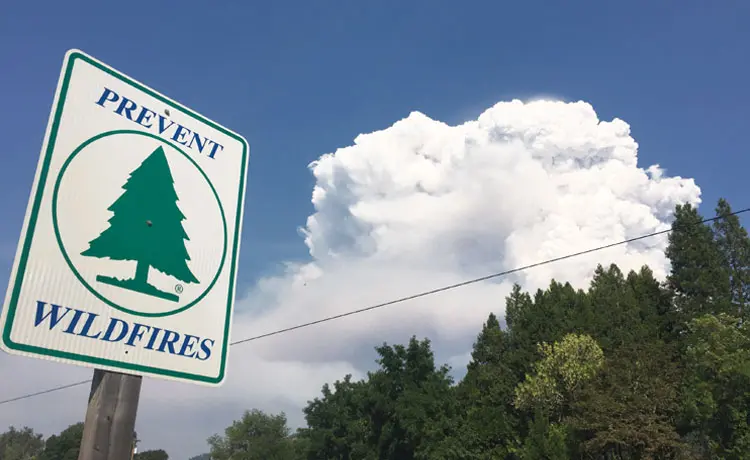Every year, wildfires throughout the country claim people’s homes and lives. Wildfires can spread quickly igniting brush, trees, homes and anything else in their paths. They can last for days and even weeks, and burn hundreds of acres of land.
With over 95% of wildfires started by people, unattended campfires are major contributors to this statistic.
But knowledge is power when it comes to wildfire prevention. By instilling in your citizens proper campfire burning and extinguishing know-how, you are doing your part to protect the wildlife, homes and lives in your community.
Campfire Safety 101
Under the right conditions, it only takes a single spark to ignite a wildfire. This can happen when the relative humidity of the air is low and the wind is strong. That’s why you should always observe the following campfire guidelines – whether you are in the wilderness or in your backyard.1. Prepare your campfire site.
- Check the weather forecast before building a campfire. Strong gusts of wind could spark a wildfire while burning debris.
- Pick a safe fire site far away from power lines, overhanging limbs, buildings, automobiles, equipment, shrubs, dry grass and leaves.
- Scrape away litter, duff and any burnable material within a 10-foot (3-meter) diameter circle.
- Keep the fire in a contained unit such as a burn barrel, BBQ unit, hibachi or a small pit with rocks around it to prevent the fire from spreading underground.
2. Carefully and safely start the campfire.
- Start building the fire with dry twigs and small sticks. Add larger sticks as the fire builds. Put the largest pieces of wood on last, pointing toward the center of the fire.
- Never use flammable liquids (such as gasoline, diesel fuel, lighter fluid, etc.) to ignite or keep your fire burning.
- After lighting the fire do not discard the match until it is cold. Douse it with water to be sure.
- Keep campfires small and contained. Large, 3-foot or higher bonfires are not safe and can turn any weenie roast into tragedy.
Never leave a campfire unattended. Even a small breeze could quickly cause the fire to spread.
3. Extinguish the campfire properly.
- Drown the campfire with water to extinguish it completely. Stir the remains to make sure all embers, coals and sticks are wet.
- Do not bury your coals; they can smolder and start to burn again.
- Keep plenty of water nearby and have a shovel for throwing sand on the fire if it gets out of control.
- Feel the ashes to be sure the fire is out. Before you leave the campsite, check the area within 50 feet of the fire for sparks or embers that may have escaped.
Always keep a fire extinguisher on hand for emergencies and teach everyone - including children - how to use it.
